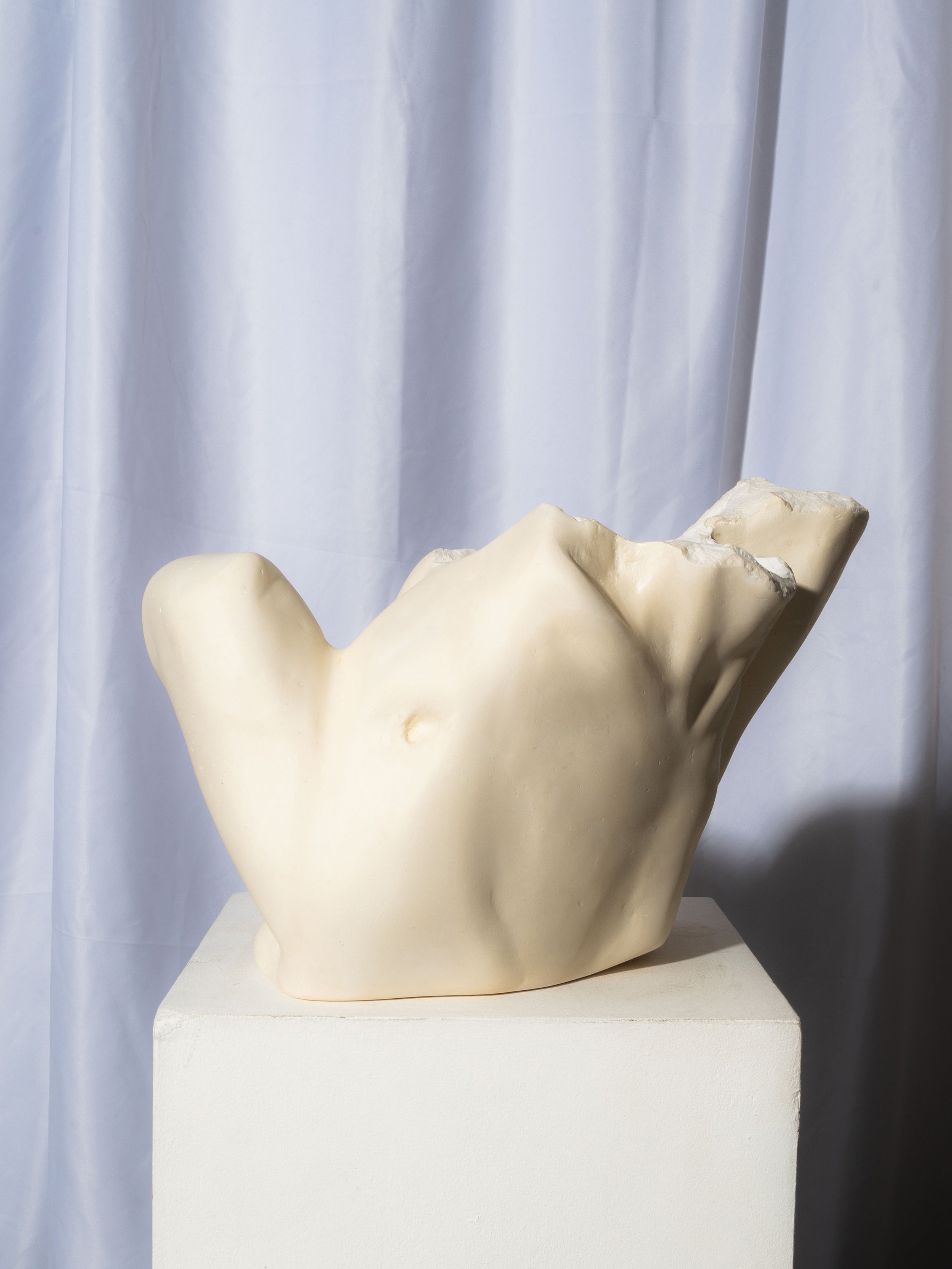
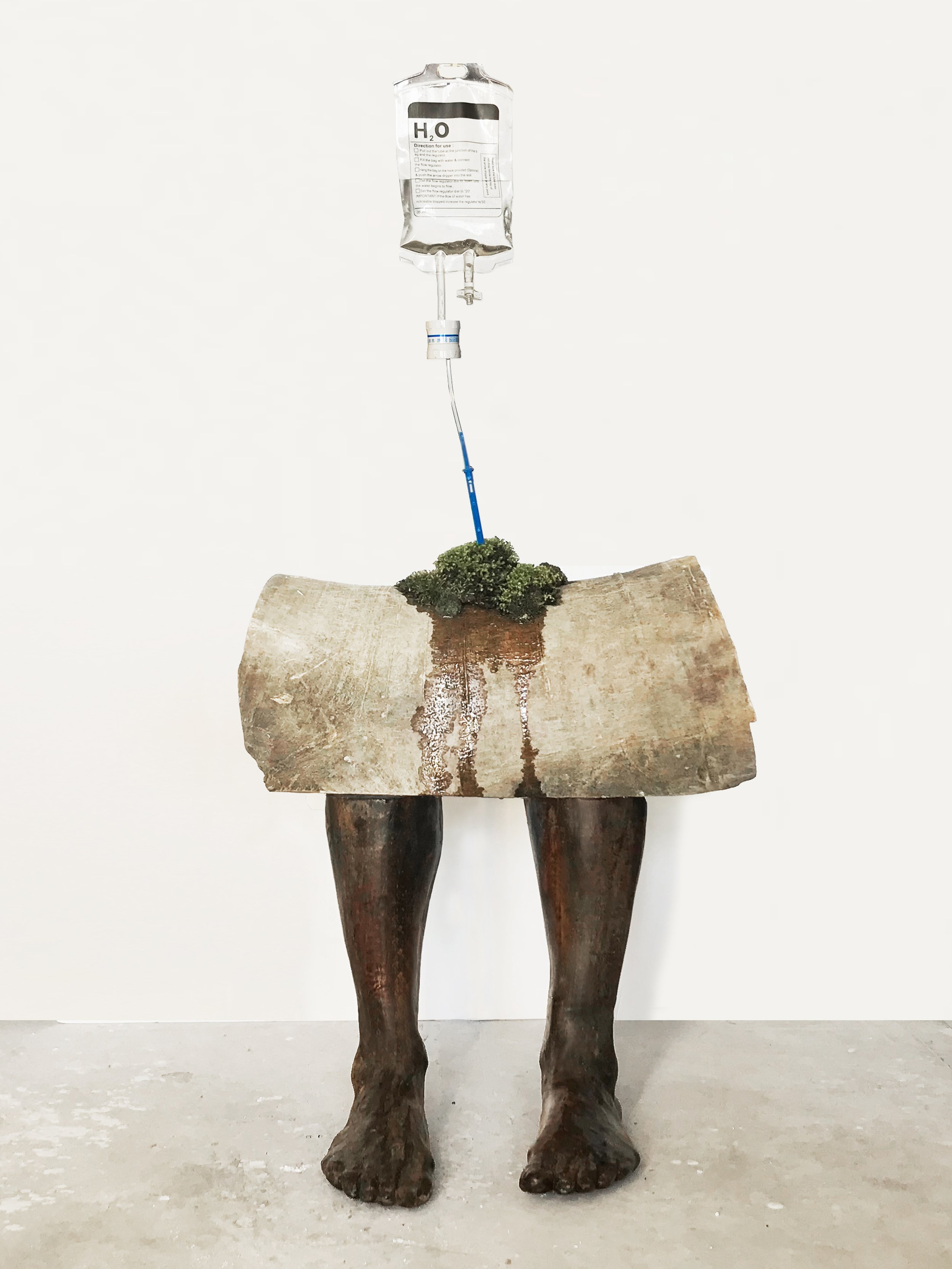
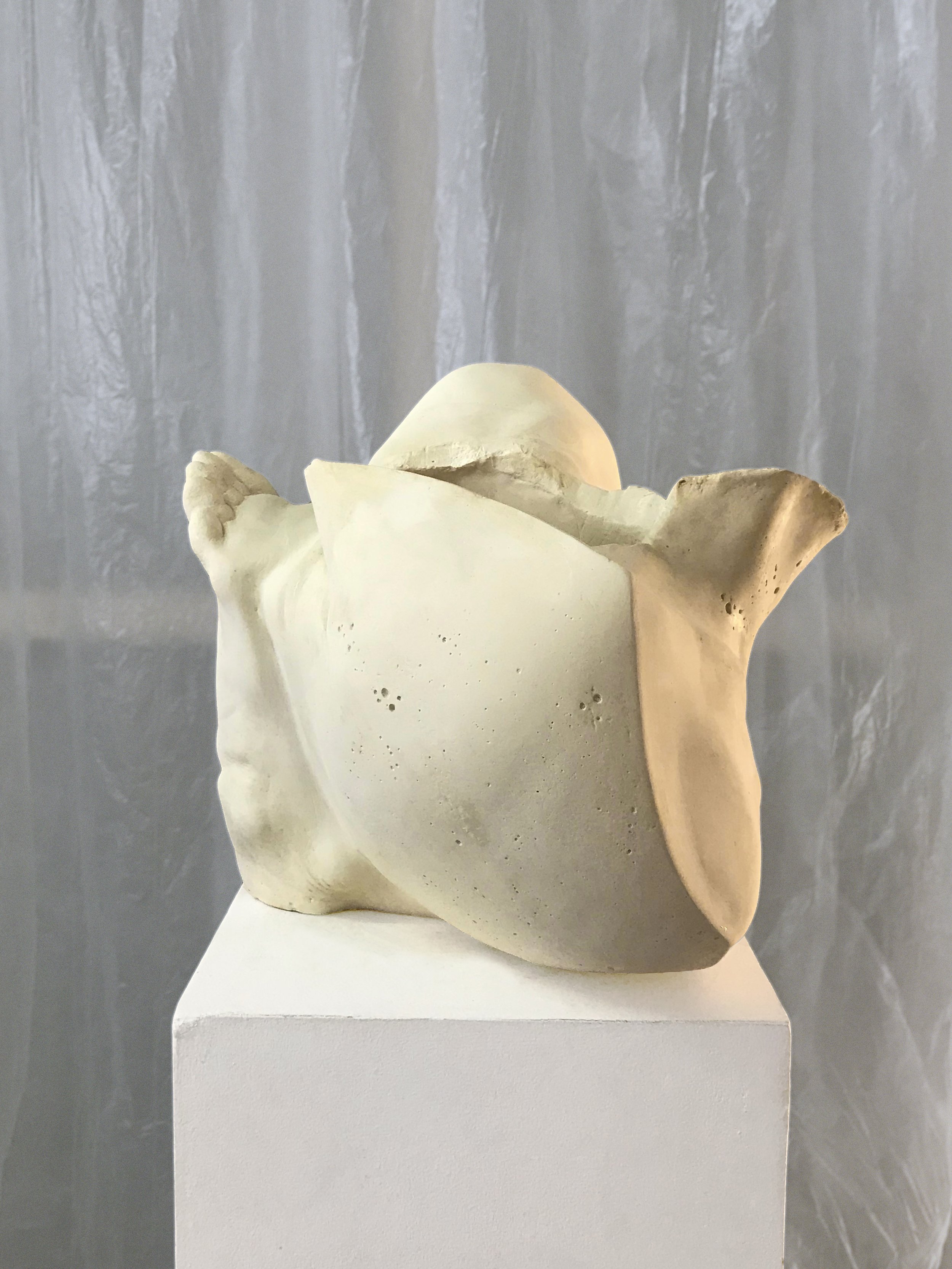
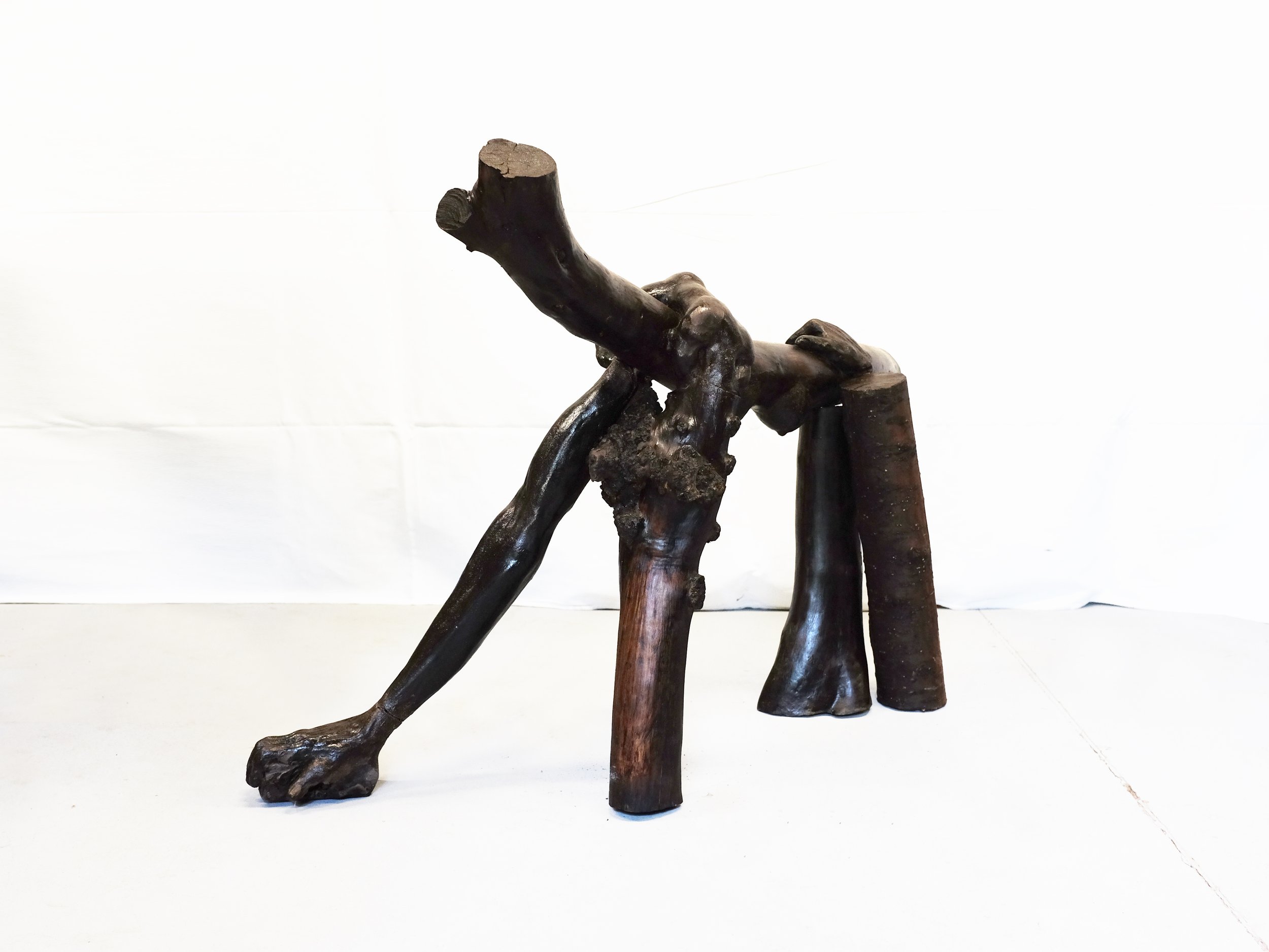
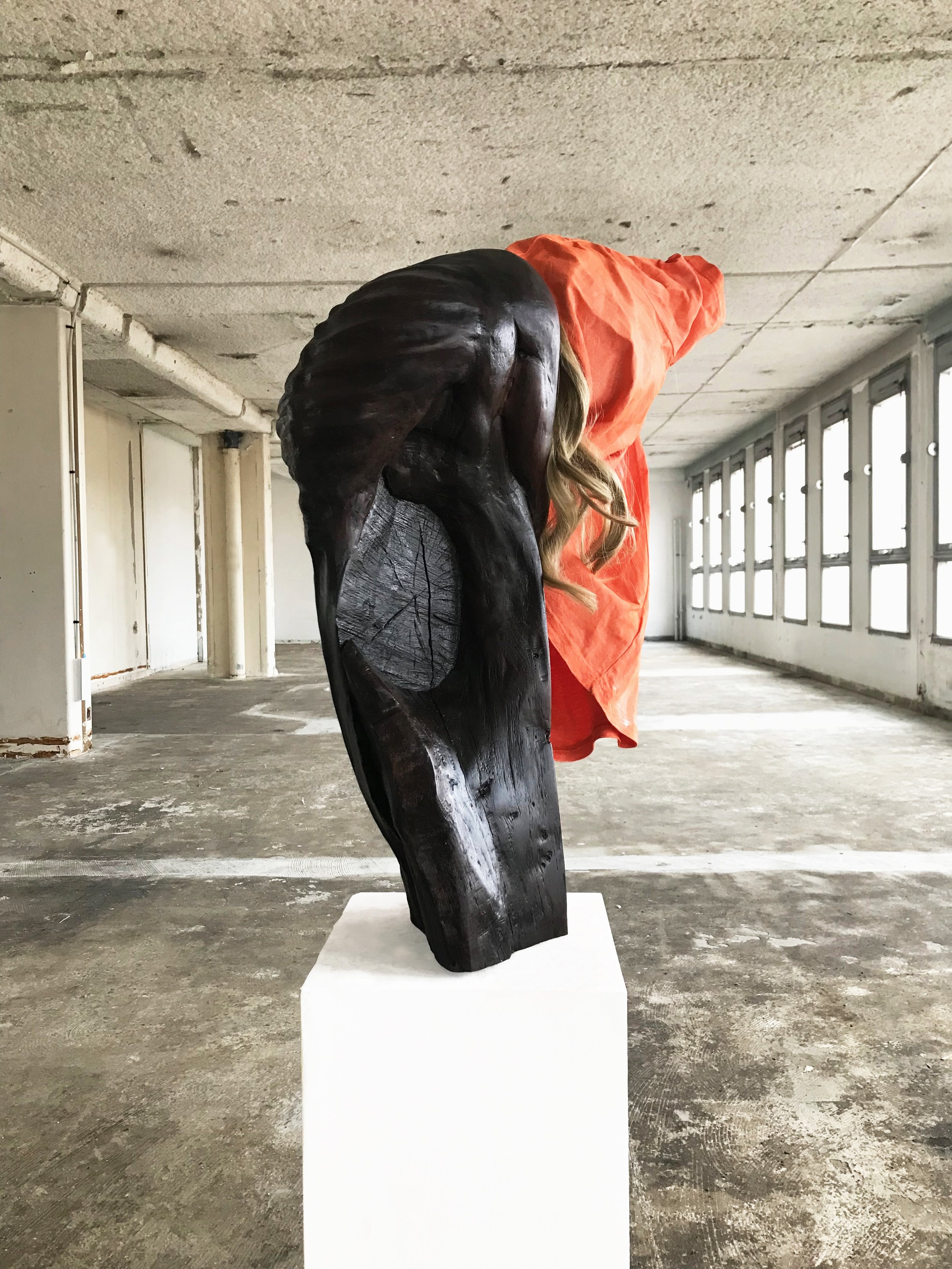
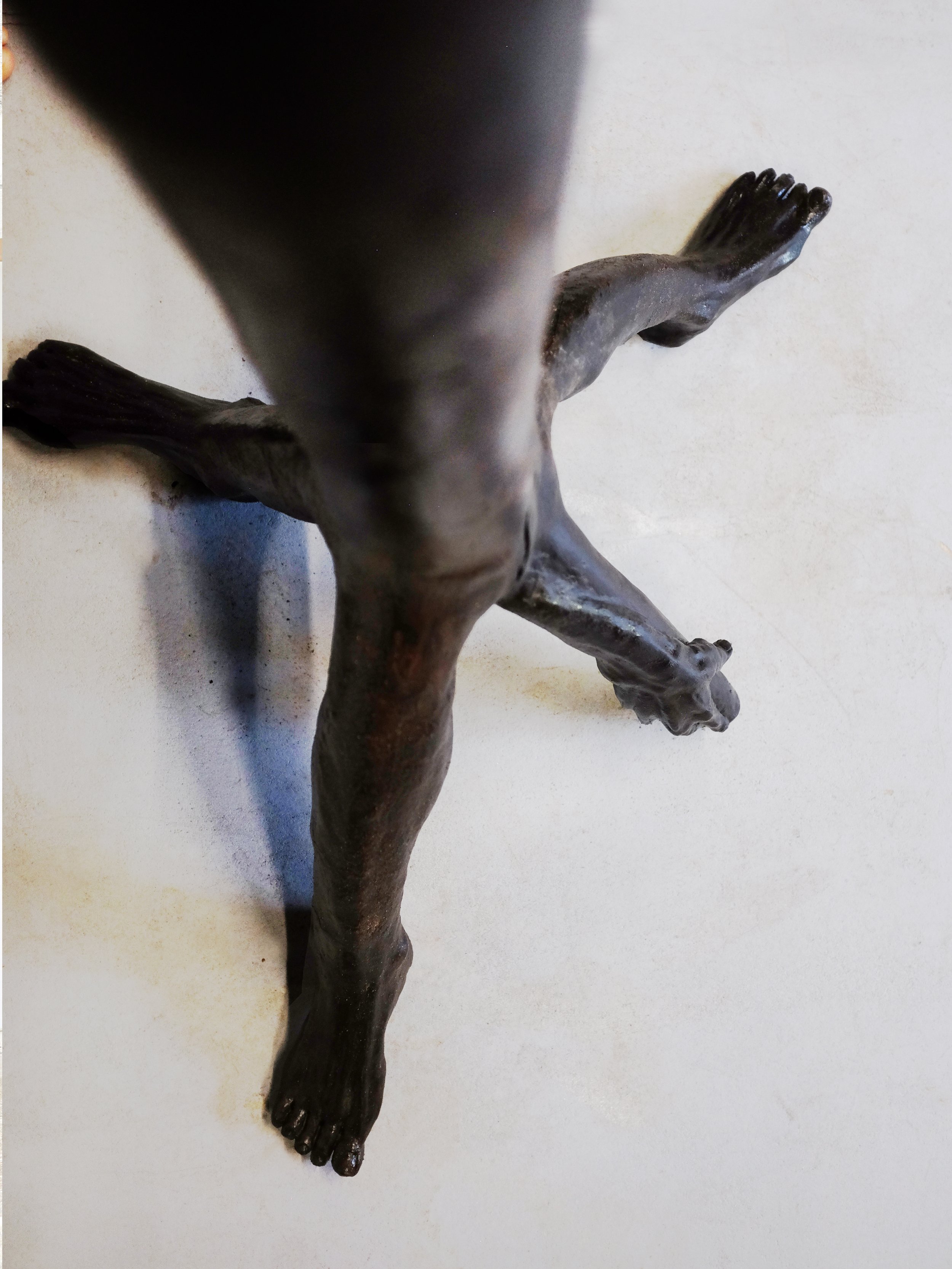

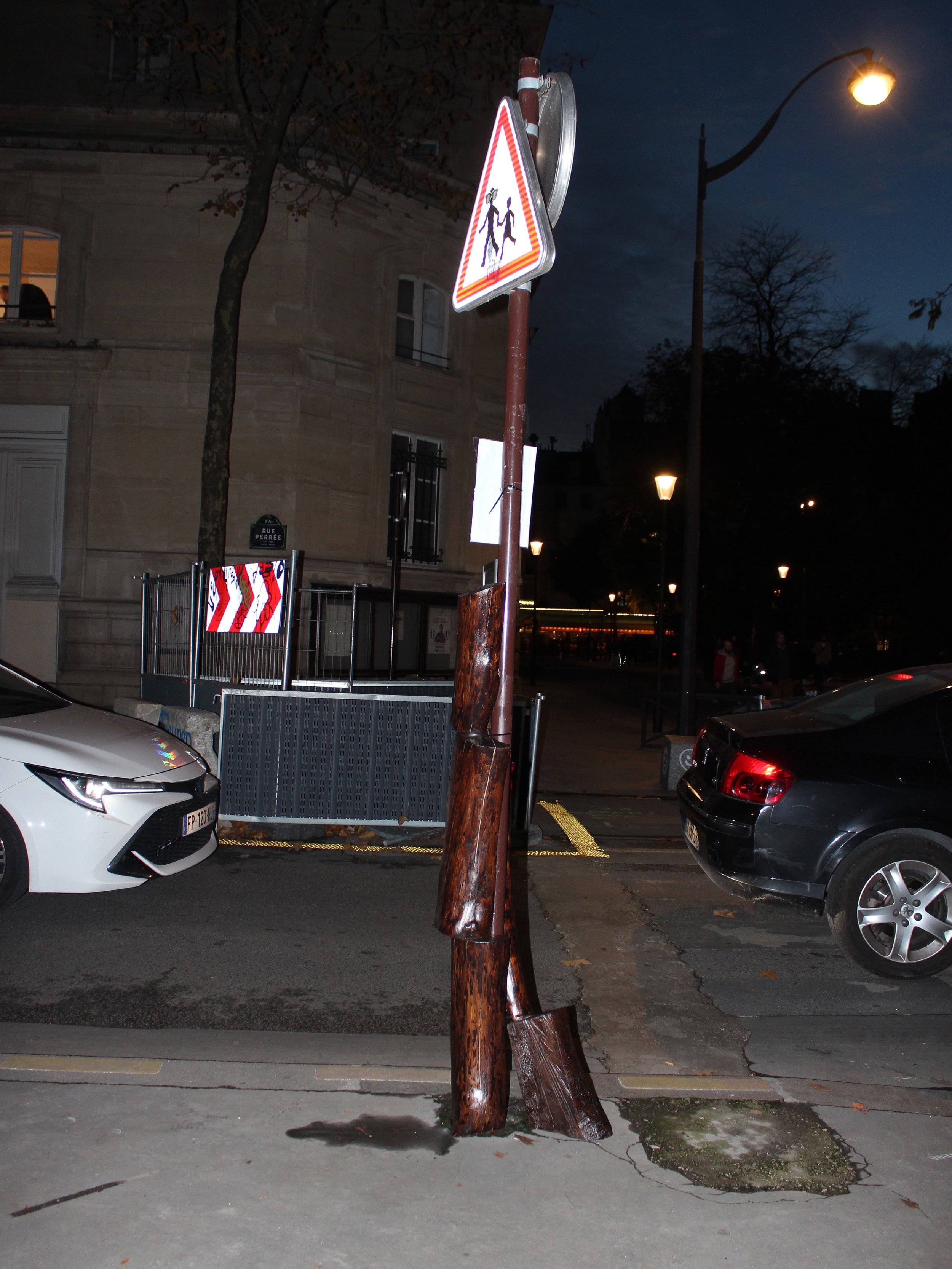

THE INTERVIEW
Delphine Miquel
1. Could you share a bit about your background and what led you to start your art practice?
Plastic art is like a path. For me, it began when I was very young, when I experienced my first aesthetic emotion in Firenze in front of Boticelli's Nascita di Venere. I was captivated by the aesthetic emotion that a work of art could arouse in me. Later, I graduated from the Beaux-arts in Toulouse, then pursued a career in fashion for over 10 years, fascinated by the double language of clothing that wrapped bodies. Today, I devote myself to my artistic approach. It's a place where I can come together and delve into everything that interests me: formal and intellectual research, unanswered questions... I love the feeling of the studio's great concentration, and once the piece is finished, the sculpture becomes a pretext for sharing questions.
2. What themes does your work explore?
My sculptures are born of a quest: that of perceiving Life, in and around us. They invite us to observe these emergences, which I call Presences.
In our noisy, hurried and entertaining societies, where everything is organized so that we live on the surface of ourselves, do I really feel this deep vibration that runs through me? Why does it sometimes reveal itself? Why does it sometimes desert me? Perhaps the beginnings of an answer can be found in Emanuele Coccia's La Vie Sensible: “For us, to live means above all to look at, taste, touch or feel the world.” Everything seems to begin with the body and its senses...
For it is through the prism of our bodies that we explore the world: the height of our eyes, thanks to the amplitude of our hands, the finesse of our hearing, the thickness of our skin, its texture, its substance... Through its porosity, we become part of the weave of the living, among animals, plants, mountains and bacteria, all bathed in the same current of life.
In my work, where it is central, the body is not seen as a mere separate anatomical envelope, but as a porous membrane, a threshold of exchange, connected to all that surrounds it. Each of our cells reacts to the rhythms of invisible flows, which inscribe the flesh in a moving weft, where memory, sensation and metamorphosis are interwoven. These biological interactions (particle flows, vibrations...), sensory interactions (perceptions, unconsciousness...) and relational interactions (memory, feelings) constantly shape our flesh. They permanently link us to all living beings.
Echoing our bodies, I propose sculptures that embody a threshold, a passage between dimensions that respond to each other: the visible and the invisible, the living and the inanimate, the human and the non-human, the conscious and the unconscious. In these incessant oscillations, the vibration of the living is revealed, gradually erasing boundaries.
3. How has your work evolved over the years, and what has influenced those changes?
Evolutions come from the materials and, in particular, access to new techniques, but above all they are often motivated by reading. For example, after reading La Vie Sensible by Emanuele Coccia. In this text, he inscribes life in an uninterrupted flow of metamorphoses, where each being shares a common breath, abolishing all boundaries between self and world. “That which contains us, air, becomes contained within us, and conversely, that which was contained within us becomes that which contains us.” To breathe is ultimately to experience this immersion, to surrender to the infinite circulation of the living. “Permeability is the key word: in this world, everything is everything.” This made me want to create more interconnections between the materials themselves, to let them modify themselves.
This gave rise to Thétys (2024), a precariously balanced sculpture in which water falls onto a moss nest in the center of a tree trunk, itself resting on a pair of feet. The materials interact, the water nourishing the moss, leaving its mark on the trunk, and creating white crystals on the feet.
And I'm currently pushing this idea even further in an ongoing series.
4. Where do you find inspiration for your work?
My approach is nourished by various readings of “reliances”, and thus of the abolition of separations. I'm interested in psychoanalysis, and in particular Didier Anzieu's concept of the “Moi-Peau”. He sees it as both a boundary and an interface of the body, a medium of incessant exchange with the outside world. The skin is thus the first frontier, but also the most porous, the most receptive, between inside and outside. It is a frontier that reveals.
Another psychoanalytical concept that informs my work is that of the “collective unconscious” of Swiss psychiatrist C.G.Jung. This unconscious, an evolution of Sigmund Freud's “collective soul”, is a universal psychic dimension that manifests itself through archetypes, symbolic forms inherited from humanity's past, influencing our thoughts, feelings, sensations and intuitions. It unites beings across space, linking the individual psyche to “contents that are universal and appear regularly”; and across time: “we are not of today or yesterday; we are of an immense age”.
Another philosopher, Baptiste Morizot, invites us to re-examine our links with the living. For him, our “way of being alive” only makes sense within a web of interdependent relationships that unite us with other living beings. In his view, the current ecological crisis has its origins in “a crisis of our sensibility”: “an impoverishment of what we can feel, perceive and experience”. Like a wolf tracker, he observes the imprints of their presence, trying to put himself in their shoes, to observe at eye level.
All these writings, from the skin, from the senses, take us back to the body and the invisible links that run through it in all its porosity, physical and psychic.
I'm also a keen observer of the human body. In particular, the hand and the foot, recurring motifs in my sculptures, are the extremities that enable us to anchor and link ourselves to the world. The hand speaks in eloquent silence. It embodies creation, action and the link between the carnal and the spiritual. With its opposable thumb, it recounts the millennia-old evolution of our species and its proximity to other species, notably our primate cousins. The foot connects us to the earth and enables us to stand upright.
5. Can you walk us through your creative process and how you bring an idea to life?
I observe, I touch, I read, and I collect a lot of images of bodies (photos I take, paintings, pictures...). With these ones, I do a lot of collages, sometimes I draw, until I get the urge to create volume and experiment with materials. And then I try, I test, and I break a lot... until the arrival of a sculpture, when its “presence” seems obvious to me.
6. What is the project you’re most proud of to date?
The Alchemy series (2024). I made casts of fragments of my body that I felt tense and taut. I then assembled them into a collage in volume. This negative form served as a mold, which I cast in plaster to produce an initial print. In this way, I seek to create “witness-beings”, embodying a passage, a metamorphosis. And I'm still continuing the process, as I'm currently in the process of making molds of these sculptures, first in lost-wax to cast in glass. In an alternation of contents and containers.
7. Do you see yourself staying in Paris long-term, or are there other cities that inspire you to work there?
For me, Paris is a base from which I can go anywhere. For now, I still like the idea of coming back.
8. What would you like to accomplish in the next few years?
I would like to continue sculpting, researching, trying things out and showing my work so that I can share my questions with others.
But more and more, I'm looking forward to creative collaborations, to enriching other points of view.
9. If there’s one thing you hope people take away from your work, what would it be?
My sculptures are invitations to suspend time, to allow oneself to pass through, to enter into a dialogue beyond appearance. They remind us that presence is a fragile, elusive emergence from the distant past, always in the making. But it is here, and only here, now.
In this interplay of resonances, the sculpted forms bear witness to an intimate, invisible connection that unites beings with each other, sculptures with viewers, and viewers with the entire universe.
It's a proposal of poetics of connection: between flesh and breath, inside and outside, visible and invisible. My sculptures are thresholds, passages to other dimensions, imprints of the pulsation of the living. I don't seek to answer the introductory questions, but rather to propose a time of feeling around this presence that has been given to us, this living thing that crosses us and connects us to other living things, so that each of us can sketch out our own questions, or experience our own answers, in our own flesh. And it's this feeling in one's own flesh that I'd like viewers to take away with them.
